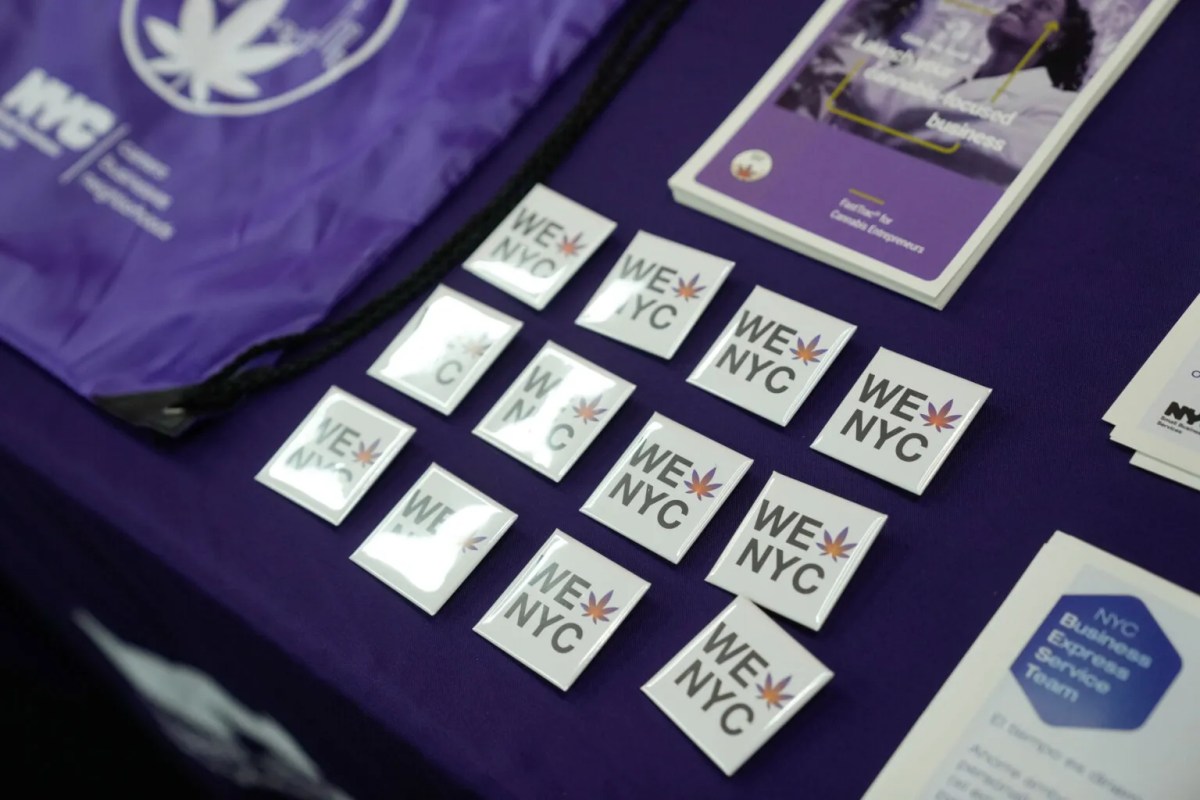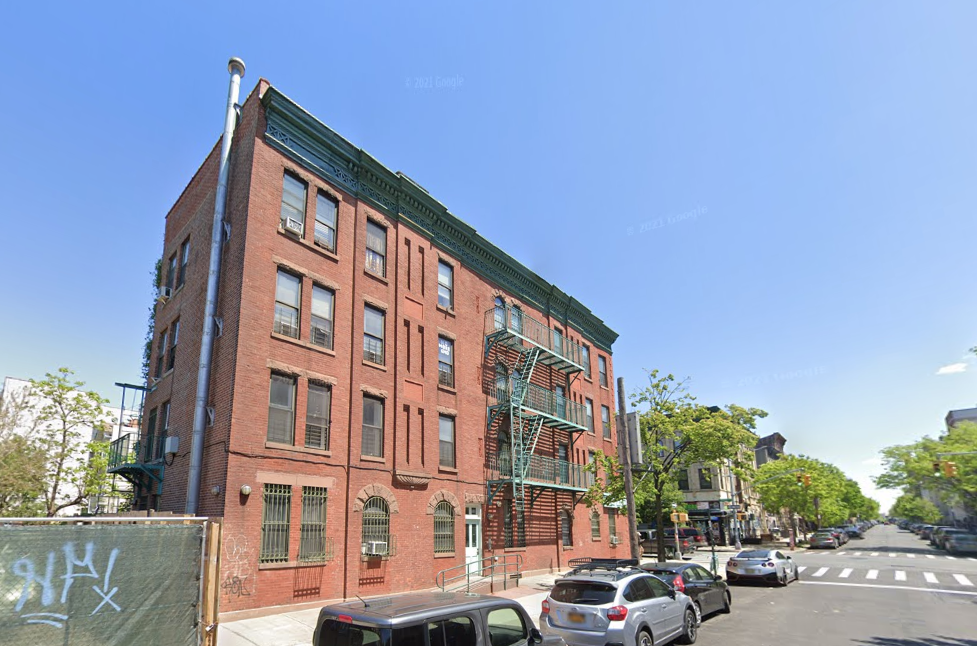-
 Do or Dive (pictured)
Do or Dive (pictured)
1108 Bedford Ave.
With 18 craft beers on tap, $5 32-oz. Budweisers and cocktails for between $6 and $8, this new-to-the scene bar from the same owners of the former Do or Dine is making a big splash.
Bed-Vyne Brew
370 Tompkins Ave.
This rustic space offers 10 craft beers on tap, and also offers take-out growlers.
Bar LunAtico
486 Halsey St.
A great live music destination, this venue is owned by three musicians. Live music plays from 9-11 p.m. Monday to Saturday, and features various genres from gypsy jazz to Bollywood.
” data-id=”112767598″ data-link=”https://amnewyork.wpengine.com/wp-content/uploads/2019/10/13636_image.jpg” class=”wp-image-1.12767598″/>Photo Credit: Yeong-Ung Yang -
 New Brooklyn Theater
New Brooklyn Theater1215 Fulton St.
This theater group is committed to showcasing socially conscious work from new, often African American, artists.
The Living Gallery (pictured)
1094 Broadway
A cultural space on the Bushwick/Bed-Stuy border, this gallery also hosts classes and workshops, including a BYOB Drink & Draw event on Wednesdays.
Herbert Von King Park
Lafayette and Tompkins avenues
Located in the center of the neighborhood, facilities in this 7.8-acre park include barbecuing areas, handball courts, sports fields and courts, and performances in its amphitheater.
” data-id=”112767766″ data-link=”https://amnewyork.wpengine.com/wp-content/uploads/2019/10/13639_image.jpg” class=”wp-image-1.12767766″/>Photo Credit: Yeong-Ung Yang -
 Shirley + Alice
Shirley + Alice434 Marcus Garvey Blvd.
A vintage fashion store for women and men, this indie designer boutique opened its doors in 2013 and specializes in avant-garde designers.
Sincerely, Tommy
343 Tompkins Ave.
Branded as a lifestyle concept store, Sincerely Tommy sells women’s clothing from local and international designers. It also has an in-store, fair-trade coffee bar.
I Like Mike’s Mid Century Modern
161 Decatur St.
This vintage shop sells restored furniture, mid-century lighting, art and decor. It also offers custom designs and restoration for old furniture in need of a little up-keep.
” data-id=”112767594″ data-link=”https://amnewyork.wpengine.com/wp-content/uploads/2019/10/13641_image.jpg” class=”wp-image-1.12767594″/>Photo Credit: Yeong-Ung Yang -
 Trains:
Trains:G to Classon Avenue, Bedford-Nostrand avenues, Myrtle-Willoughby avenues, Flushing Avenue
C to Franklin Avenue, Nostrand Avenue, Kingston-Throop avenues, Utica Avenue, Ralph Avenue, Rockaway Avenue
A to Nostrand Avenue, Utica Avenue
S to Franklin Avenue
J to Chauncey Street, Halsey Street, Gates Avenue, Kosciuszko Street, Myrtle Avenue, Flushing Avenue
Z to Chauncey Street, Gates Avenue, Myrtle Avenue
M to Myrtle Avenue, Flushing Avenue
Buses
B7, B15, B25, B26, B38, B43, B44, B46, B47, B48, B52, B54, B60, Q24
” data-id=”112767793″ data-link=”https://amnewyork.wpengine.com/wp-content/uploads/2019/10/13644_image.jpg” class=”wp-image-1.12767793″/>Photo Credit: Samantha Wieder -
 Median sales price: $769,000
Median sales price: $769,000
Number of units on market: 827
Median rental price: $2,350
Number of rentals on market: 8,526
(Source: StreetEasy)
” data-id=”112767595″ data-link=”https://amnewyork.wpengine.com/wp-content/uploads/2019/10/13648_image.jpg” class=”wp-image-1.12767595″/>
Photo Credit: Yeong-Ung Yang -
 The Billie Holiday Theatre, a non-profit founded in 1972 dedicated to African American performances, has been undergoing a $4.1 million renovation and is slated to reopen for the spring 2017 season.
The Billie Holiday Theatre, a non-profit founded in 1972 dedicated to African American performances, has been undergoing a $4.1 million renovation and is slated to reopen for the spring 2017 season.The 218-seat theater, at 1368 Fulton St., was established by arts pioneer Herbert Scott Gibson and is a cultural icon in the Bedford-Stuyvesant community. Stars such as Samuel L. Jackson, Debbie Allen, Tichina Arnold, Bill Cobbs, Phyllis Yvonne Stickney, Carol Woods, Elaine Graham and Ebony JoAnn have graced its stage.
This is the first renovation the performance space has had in its 44-year history, according to Dr. Indira Etwaroo, executive director of the Center for Arts & Culture at the Bedford Stuyvesant Restoration Corporation, a community development organization, and executive director at the Billie Holiday Theatre.
“This theater is truly a jewel in the crown of Brooklyn arts and culture,” Etwaroo said in a statement. “It will be a world-class destination that continues to remind us all that our stage, our story is the American story.”
The makeover, funded by the city Department of Cultural Affairs, will include a revitalization of chairs, carpeting and lighting, in addition to the dressing room and green room, along with technological advances for the stage.
Additionally, Brooklyn Borough President Eric L. Adams announced in November that the theater will receive another $200,000 from his office for further renovations, including upgrades to the box office and lobby bathrooms.
The theater company is hosting shows at the Kumble Theater in Fort Greene while the Billie Holiday theatre undergoes renovations.
” data-id=”112767597″ data-link=”https://amnewyork.wpengine.com/wp-content/uploads/2019/10/20268_image.jpg” class=”wp-image-1.12767597″/>Photo Credit: Yeong-Ung Yang
The Bedford-Stuyvesant housing market is exploding.
With its plentiful brownstones, proximity to Manhattan, and thriving culture and community, many investors and home-seekers are buying into the neighborhood.
According to StreetEasy, the median sales price in Bed-Stuy rose from $600,000 in 2013 to $800,000 in 2016 as of Oct. 12.
Rents are also creeping up, with the median rising from $2,000 in 2013 to $2,400 this year as of Oct. 12, the listings site found.
However, brownstones in Bed-Stuy are relatively affordable compared to those in areas like Park Slope, according to Michael Feldman, the president of Bedford Brownstone Realty at 1171 Bedford Ave.
Much of his clientele are families moving from Manhattan, he said.
Instead of spending $1 million on a condo in Manhattan, buyers can spend that in Bed-Stuy “and get larger square footage and have a better property that has a good chance to go up in value in the next two to five years,” he said. “And they can have fireplaces \[and\] beautiful wood staircases.”
Feldman specializes in selling buildings that would make good renovation projects, which Bed-Stuy is chock full of.
Brownstone renovations have been a hit with cash investors looking to flip properties, which is helping to drive up overall property values in the area, Feldman added.
New developments are popping up here too, such as the four-story 443 Bainbridge St. and the six-story 159 Tompkins Ave., both built this year.
Gentrification is a common topic for conversation in Bed-Stuy these days.
The area has long-been a haven for minorities, but a hipster crowd is moving in, bringing with it new restaurants and bars.
For example, the reggae bar Lovers Rock opened on Tompkins Avenue in July 2015 and Eva Jean’s, a farm-to-table restaurant, opened on Kosciuszko Street in February of this year.
Fulton Street, to the south, remains Bed-Stuy’s main shopping street with stores like Walgreens and Footlocker, along with Abu’s Homestyle Bakery for desserts and the Carib Food Market for fresh fruit and vegetables.
And with numerous bus lines and subway stops, it’s an easy neighborhood to commute from.
As for a downside, apart from Herbert Von King Park on Lafayette Avenue, there isn’t much open space in the area.
But newcomers appreciate the sense of community that exists in the otherwise urban neighborhood, according to Emily Nonko, 28, who moved to the area three years ago and now runs The Bed Stuy Blog.
“People know each other, people hang out on their stoops and they have been in the area a long time,” she said.
Neighbors mingle at community events over the summer, including at block parties and farmers markets — among which are the Hattie Carthan Community Farmers’ Market at Marcy Avenue and Clifton Place, and the Marcy Plaza Farmers Market at Fulton Street and Marcy Avenue.
Bed-Stuy also has several community gardens, like the Halsey Community Garden at 462 Halsey St. and the Quincy Community Garden at 100 Quincy St., and residents regularly win the Brooklyn Botanical Garden’s Greenest Block in Brooklyn award.
“It’s a really big deal in Brooklyn,” Nonko said of the award. “And it often goes to Bed-Stuy blocks because people have done these gorgeous flower beds and taken care of all the trees. It’s just incredible the amount of investment in the neighborhood from the local residents.”
For Suzanne Spellman, 61, a guide with Morris Hill and Sparrow walking tours who works in Bed-Stuy, the sense of community is what makes Bed-Stuy what it is.
“When you live on a block, you’re joining a village,” Spellman said. “I believe that, for the most part, on most of the blocks in Bed-Stuy there’s that sense of community that transcends how long you live there, or race or religion or age. People are just neighbors, and that’s wonderful.”


















